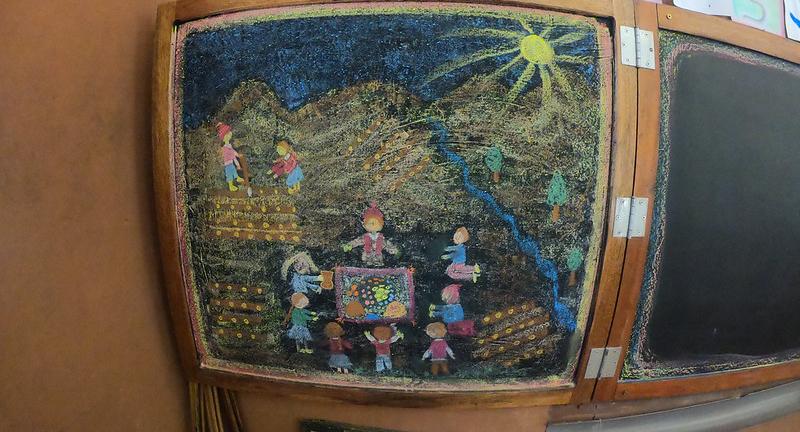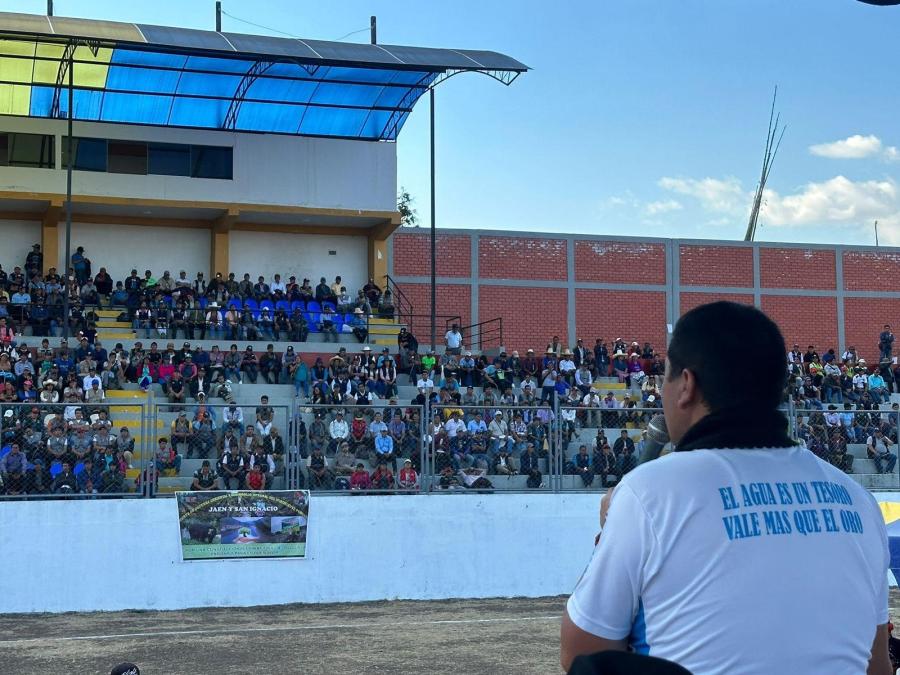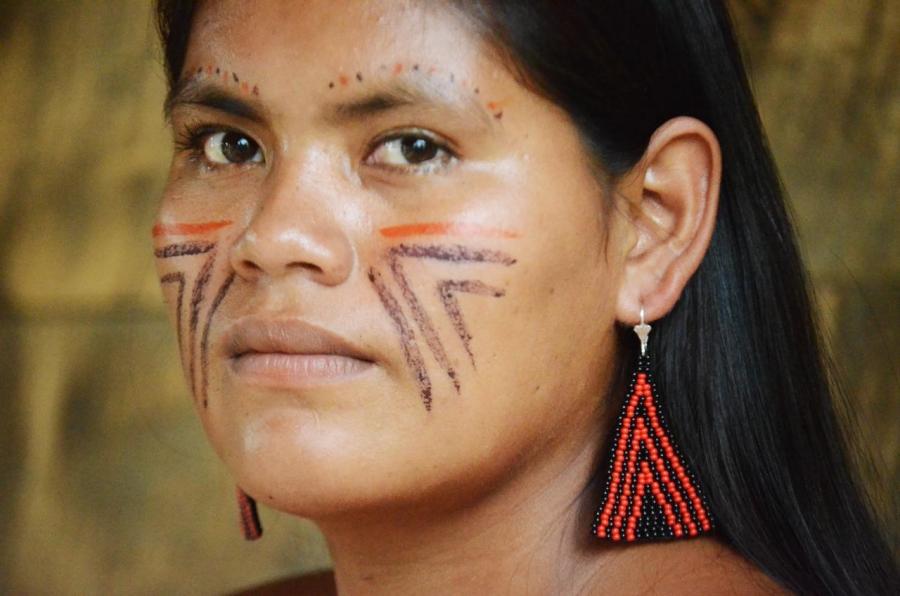
By Ariel Iannone Román
On Monday, November 16, 2020, in Perú, President Martín Vizcarra was removed from power by the Republic’s Congress, sparking a national crisis that resulted in mass demonstrations in the streets, police violence, and the two young people killed. The Congress had already attempted to impeach the president in September, but fell short of the required minimum of 87 votes. Vizcarra is currently under investigation for corruption, making him the fifth president this decade to be investigated. Additionally, many lawmakers claimed to be motivated by anger over the way the president has been dealing with the COVID-19 pandemic, including incidences of oxygen shortages and misuse of rapid antibody tests. Perú has the world’s highest per capita death toll from COVID-19, with 34,879 deaths out of the 922,333 infected in a nation of 32 million people, and the economy has fallen into a recession.
Throughout the pandemic, the Peruvian government has systematically excluded Indigenous communities from health services, as well as neglecting to track their COVID-19 data, effectively rendering them invisible. In the case of Cantagallo, a shantytown established in Lima 20 years ago by the Shipibo Konibo Peoples after illegal logging and mining projects forced them to leave their traditional lands in the Amazon, the town was forcibly quarantined after test results showed a 70 to 80 percent infection rate. Police and military erected fences overnight, restricting access to drinking water, food, and medical care, and spurring the formation of Comando Matico, a grassroots Indigenous-led organization that provides medical treatment to the community. The organization derived their name from matico, a spiked pepper shrub and traditional Indigenous medicinal herb, which they have been using to treat COVID-19 patients in addition to commercial medical treatments.
Prior to becoming president, Martín Vizcarra served as vice president for Pedro Pablo Kuczynski, who resigned in 2018 due to a corruption scandal. As president, Vizcarra made a commitment to stamp out corruption and dissolved the congress in 2019 in a bid to remove dishonest politicians from office, many of whom were also facing criminal investigations. At the time, Congress had been blocking his attempts to change how judges were chosen for office and to bring an end to bribery, fraud, and misuse of public funds. More recently, Vizcarra tried to remove the right to parliamentary immunity, which protects politicians from being prosecuted for their crimes while in office.
A new congress was elected in January 2020; it contained few allies for Vizcarra, which made it possible to remove him despite the fact that a majority of Peruvians wanted to see him finish his term. According to Vizcarra, 68 of the new congress members are also facing investigation for crimes such as money laundering and even homicide. Vizcarra was removed from office in a decision that was facilitated by a 19th-century clause that gives Congress the power to remove any president who has been deemed to have a “permanent moral incapacity.” Vizcarra was replaced by the President of the Congress Manuel Merino de Lama, who has been previously accused of nepotism. In September 2020, during the first attempt to impeach Vizcarra, local media had also reported that Merino sought support from high-level military leaders. Upon becoming president, Merino chose as prime minister a politician who had resigned in 2009 after 34 people were killed during a Indigenous demonstration.
The Asociación Interétnica de Desarrollo de la Selva Peruana (AIDESEP), or the Interethnic Association for the Development of the Peruvian Rainforest, which includes 1,809 Indigenous communities of the Amazon, including 50 in Perú, condemned the government’s decision to impeach Vizcarra and rejected Manuel Merino as president, stating that the move was an arrangement made between crooked politicians and business owners. According to AIDESEP, the new Congress and Merino’s government are anti-Indigenous and pose a serious threat to the Peruvian Amazon. AIDESEP reaffirmed their rights to autonomy, self-governance, and self-determination in the face of this new development.
By Tuesday, November 17, 2020, Congress was swearing in Francisco Sagasti Hochhausler as president after Manuel Merino resigned due to the widespread demonstrations. Sagasti is the fourth president to serve within the 2016-2021 presidential cycle and is a member of the centrist Partido Morado - the Purple Party, a color which represents the blending of red and blue, right and left. He had briefly become the new President of Congress after Merino vacated that position, which, due to Perú’s current lack of a vice president, put him next in line to become president when Merino resigned. Sagasti himself had voted against the impeachment of Vizcarra, and is now pledging to prioritize political reform. He appointed a mixed cabinet with members of different parties, aiming to create a diverse government that truly represents the Peruvian people. Of the 18 Cabinet members selected, eight of them are women. The entire Cabinet will serve with him until his presidential term ends on July 28, 2021.
In his first address as president, Sagasti asked for forgiveness, on behalf of the State, for the deaths of Inti Sotelo Camargo (24) and Jack Bryan Pintado Sánchez (22). Both Sotelo and Pintado were killed during the demonstrations this past week, though the National Police of Perú has denied responsibility for their deaths, instead blaming political agents opposed to the presidency of Manuel Merino for using excessive violence at the demonstrations. Attorney General Zoraida Ávalos Rivera has opened a preliminary investigation against Manuel Merino, Ántero Flores-Aráoz, and Gastón Rodríguez Limo for abuse of power and homicide. At the time of Sotelo and Pintado’s deaths, Merino had been serving as president, Flores-Aráoz as leader of the Cabinet, and Rodríguez as Minister of the Interior. While Sagasti promises to pursue political reform and the investigation into Camargo and Pintado’s deaths, demonstrations have continued in the streets.
According to Paloma Abregú, executive director of Centro Sapichay, “Working on the ground continues to be a need.” Centro Sapichay is one of Cultural Survival’s Keepers of the Earth Fund grant partners. Centro Sapichay seeks to “unite the rural and Indigenous communities of the Wanka, Chanka, Ashaninka, Ya’nesha, Awajun, Kana and Quechua Peoples in Peru through an Indigenous-led rapid response network, AWAY (Quechua for ‘to weave’).” Just prior to the political turmoil caused by the removal of Vizcarra, many illegal proposals had been in the works, some of them approved, which threatened to overturn international agreements meant to protect Indigenous rights. Abregú says that one of these proposals opened the way for local police departments to encroach on Indigenous communities, undermining the Indigenous authority that is an essential part of the right to self-governance and exposing Indigenous communities to further exploitation by extractive industries. Abregú hopes that by drawing international attention to this situation, the erosion of this right may be reversed. The continued demonstrations also include demands for justice for Inti Sotelo Camargo and Jack Bryan Pintado Sánchez, as well as for people who have been injured, arbitrarily detained, or have gone missing. Other demands include that the government cover the cost of medical care for people injured during the demonstrations, provide a pension for the families of Camargo and Pintado, and create a referendum for the April 21, 2021, election which would allow the country to write a new constitution. This, among other things, would give Perú a chance to remove the 19th century “permanent moral incapacity” clause which permitted the congress to so easily remove Martín Vizcarra from the presidency.
It has not escaped notice that a high percentage of the people protesting in the streets are youth, who have come to be known as the Bicentennial Generation. According to sociologist Noelia Chávez in an interview with RPP Noticias, this is a generation that refuses to stay silent and let the usual politicians keep them from imagining a different future. In concert with this, AIDESEP has requested an urgent meeting with Sagasti and his interim government, proposing a discussion of new governmental actions with an aim to end racism, ethnocide, and ecocide by the middle of the 21st century. The organization would also like to open up a dialogue around the need for measures to stop exploitation of the land and the murder of Indigenous leaders, increase funds to combat COVID-19 in the Amazon, and prevent further deforestation. They also seek to reintroduce the Plan de Acción Bicentenario de los Pueblos Indígenas Amazónicos, or the Bicentennial Plan of Action of the Indigenous Communities of the Amazon, which outlines 30 objectives and 200 specific actions for the benefit of Indigenous communities of the Amazon and includes allocating 1% of Perú’s 2021 budget to an Indigenous Amazon Fund. The plan had originally been presented in 2019 to then-President Martín Vizcarra, who had promised to consider implementing it. AIDESEP is joined in their efforts by more than 300 organizations who are continuing to seek truth and justice for the Bicentennial Generation and for all of Perú.
Photo courtesy of Kusi Kawsay.



